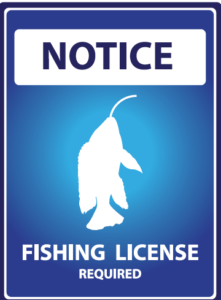Related Advancement
- Tenderfoot requirement 1b
- Second Class requirements 1a and 4
- First Class requirement 1a
- Bird Study, Environmental Science, Fish and Wildlife Management, Fishing, Fly-Fishing, Mammal Study, Nature, Oceanography, Reptile and Amphibian Study, and Sustainability merit badges
What Is Wildlife? – Depending on whom you ask, the definition of wildlife can vary. To a homeowner, it can mean Steller’s jays, chickadees, or gray squirrels. A hunter might tell you white-tailed deer, elk, or turkeys. To a rancher, it might mean coyotes and wolves. Although these are all different examples of animals people associate as wildlife, a similarity they all share (and a good definition of wildlife) is that they are free-ranging, non domesticated animals usually in their natural environment. Even though wild mammals and birds are often the focus of management efforts, it is important to realize all wild animals fall under the term wildlife.
Are Fish Wildlife? – Fish and wildlife are frequently talked about separately, even though fish do fall under the definition of wildlife.
This distinction stems from the early days of wildlife management, but it has begun to fade recently with agencies and groups
 Why Manage Wildlife – During most encounters with wildlife, we may see only one or a few individual animals that are doing fine, giving the impression everything is normal with the species. However, just because the few animals you see do not have problems, that does not mean the population—the grouping of all individuals of a certain species in a designated area—is doing well, too. Wildlife populations can face a variety of problems, stemming from diverse causes. Often when a wildlife population is declining (or occasionally growing too big), wildlife professionals intervene to help adjust the population to a sustainable number. They are especially keen on working to conserve and/or preserve wildlife when humans have jeopardized their populations.
Why Manage Wildlife – During most encounters with wildlife, we may see only one or a few individual animals that are doing fine, giving the impression everything is normal with the species. However, just because the few animals you see do not have problems, that does not mean the population—the grouping of all individuals of a certain species in a designated area—is doing well, too. Wildlife populations can face a variety of problems, stemming from diverse causes. Often when a wildlife population is declining (or occasionally growing too big), wildlife professionals intervene to help adjust the population to a sustainable number. They are especially keen on working to conserve and/or preserve wildlife when humans have jeopardized their populations.
 Besides addressing population problems, wildlife managers also try to prevent and solve human wildlife conflicts. Whether it’s a bear eating out of trash cans in a neighborhood or birds flying into planes near a busy airport, wildlife can interfere with daily life, thus creating human-wildlife conflicts. These conflicts usually happen when urban development spreads into previously wild areas, displacing wildlife due to loss of habitat. Since these human-wildlife conflicts benefit neither people nor animals, wildlife managers look for solutions.
Besides addressing population problems, wildlife managers also try to prevent and solve human wildlife conflicts. Whether it’s a bear eating out of trash cans in a neighborhood or birds flying into planes near a busy airport, wildlife can interfere with daily life, thus creating human-wildlife conflicts. These conflicts usually happen when urban development spreads into previously wild areas, displacing wildlife due to loss of habitat. Since these human-wildlife conflicts benefit neither people nor animals, wildlife managers look for solutions.
Types of Management – Wildlife management can come in as many shapes and sizes as the animals it aims to protect; however, there are two general categories:
 Active (or direct) management works directly on the population level, changing its numbers by direct actions. Examples include breeding programs and adjusted hunting levels, or altering numbers through indirect actions such as protecting the animal’s habitat, removing predators, and vaccinating individuals against disease. Active management is generally implemented when a wildlife species slides to a dangerously low level or increases to an unsustainably high level.
Active (or direct) management works directly on the population level, changing its numbers by direct actions. Examples include breeding programs and adjusted hunting levels, or altering numbers through indirect actions such as protecting the animal’s habitat, removing predators, and vaccinating individuals against disease. Active management is generally implemented when a wildlife species slides to a dangerously low level or increases to an unsustainably high level.- Inactive (custodial or passive) management works to be preventive and/or protective of the wildlife population. It seeks to help minimize outside factors on the population and its respective habitat. Wildlife refuges, national parks, and marine sanctuaries are all examples of passive management. Other methods include monitoring population levels and preventing interference to migratory routes or nesting grounds.
Endangered Species Act – The Endangered Species Act of 1973 is arguably the most powerful law protecting wildlife in the United States. The act reinforces the idea that every plant or animal species and its niche—an organism’s role within its community—are important. Some major points of the act include the following:
 The act outlines the process for categorizing an animal if its population is dangerously low. A species can be listed as “endangered,” meaning it is in danger of extinction throughout all or a significant portion of its range, or “threatened,” meaning it is likely to become endangered in the foreseeable future.
The act outlines the process for categorizing an animal if its population is dangerously low. A species can be listed as “endangered,” meaning it is in danger of extinction throughout all or a significant portion of its range, or “threatened,” meaning it is likely to become endangered in the foreseeable future.- The act protects critical habitats for endangered or threatened animals.
- The act makes it illegal to harm endangered or threatened animals or their habitat.
- The act is enforced by the U.S. Fish and Wildlife Service and National Marine Fisheries Service.
 Hunting and Fishing – Although it might seem strange that killing animals can help a species, hunting and fishing play important roles in wildlife management. Annually, state wildlife managers determine what number of a particular species can be harvested or taken via hunting and fishing regulations for their respective state, helping states reach their goals for certain wildlife populations. Revenue from hunting and fishing licenses and permits also help cover the wildlife management budgets at the state and federal levels.
Hunting and Fishing – Although it might seem strange that killing animals can help a species, hunting and fishing play important roles in wildlife management. Annually, state wildlife managers determine what number of a particular species can be harvested or taken via hunting and fishing regulations for their respective state, helping states reach their goals for certain wildlife populations. Revenue from hunting and fishing licenses and permits also help cover the wildlife management budgets at the state and federal levels.

